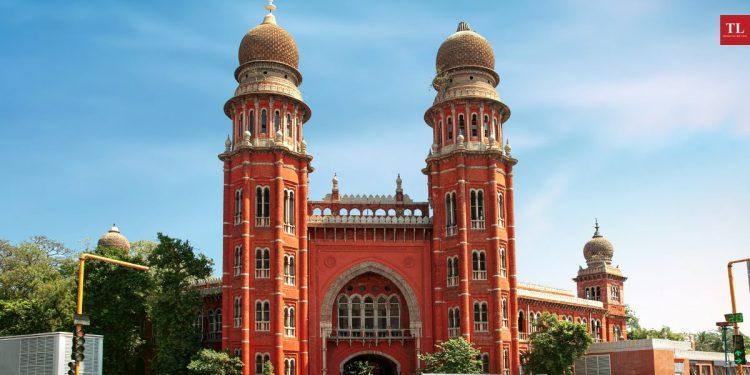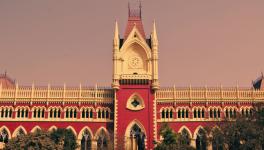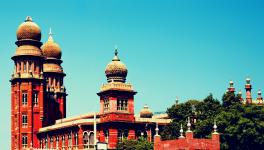Resurrection of Heritage – Traversing the Madras High Court Judgment that Lays the Roadmap

Examining a recent judgment by the Madras High Court in which the court stressed the importance of preserving ancient temples and monuments and issued a slew of directions to the Tamil Nadu government to conserve the state’s cultural heritage, N.KAVITHA RAMESHWAR writes about the significance of the judgment.
—-
The recent ruling of a division bench of the Madras High Court in a suo motu public interest litigation (PIL), rendered on June 7, 2021, on the matter of conservation of architectural heritage, including ancient monuments and temples, seems to have captured in extenso what the French essayist Joseph Joubert, the French essayist once said: “Monuments are the grappling-irons that bind one generation to another”.
While emphasizing the need for conservation of heritage, the High Court seems to have been particularly guided by the following words of Jamaican political activist and journalist Marcus Garvey: “A people without the knowledge of their past history, origin and culture is like a tree without roots”.
Decoding our nation’s civilizational DNA
History bequeaths heritage – the heritage of art, culture, tradition, folklore, architecture, and various other forms of antiquity, the primary purpose of which is to mirror the life and ethos of the bygone civilizations.
India is home to several marvels of art and architecture in their kaleidoscopic grandeur. These have stood the test of time and nature’s calamitous onslaughts.
The High Court, in its poignant 225-page judgment, is primarily concerned with the conservation of archaeological monuments in the state of Tamil Nadu. However, what has been said in the prelude to the operative portion of the judgment could serve as a synecdoche on the issue to the whole of our country. This is because of the universality of its application, emphasizing more than once that the symbols of history act as a protective carapace for the civilization of the present and future generations.
While holding that “a monument, a sculpture or scripture is not just a record of historical fact but is a testimony to the knowledge, culture, tradition and lifestyle of the people”, the Court has sought to view the architectural heritage, artistic splendour and the sagacious scriptures of the yesteryears as a means to decode the civilizational DNA of our nation. The Court has reaffirmed that architecture is the undocumented testament of history.
A thorough reading of the judgment would bring to light the engineering marvels that the Peria Kovil (Brihadeeswarar Temple) of Thanjavur, the Madurai Meenakshi Amman Temple and the Shore Temple of Mamallapuram, among others, which embody the scientific temper and knowledge that have propelled their construction. These have then become not only enduring symbols of heritage, but also structures of monumental artistic and architectural grandeur, showcasing a deep knowledge of the pure sciences of physics and geometry, and evidencing that art and science have walked hand in hand.
Judgment woven with silken secular threads
A striking feature that runs like a connecting vein through the entire judgment is an acknowledgment of the fact that architecture and art transcend narrow and parochial boundaries of religion, the region as well as language, and cultural traditions.
The High Court’s employment of the doctrine of parens patriae while issuing its various mandates and directions are further testimony to this. The Court decisively dusts the cobwebs off, and brings back to life, the Ancient Monuments and Archaeological Sites and Remains Act, 1958 in its full bloom, applying it to the monuments in the state in order to declare that all temples which are more than a hundred years old are to be treated as monuments under the Act.
In some portions of the judgment, the Court has even used the words ‘temple’ and ‘monument’ interchangeably, thereby underlining the fact that ancient monuments and architectural structures belong to the State and that no individual, group and entity can lay claim on the same. This factor is of primordial importance in furthering the Directive Principles of State Policy enshrined in our Constitution that calls upon the State to preserve and protect our rich heritage and composite culture.
Historical Role of the temple as a unifying factor
Since the present judgment is primarily concerned with architectural heritage with specific reference to constituting a Heritage Commission, as also to set up the Mamallapuram World Heritage Area Management Authority to safeguard the ancient monuments and temples in the state, it is important to place in context the role of the temple in southern India during the second half of the first millennium CE.
A reading of historical sources would reveal that that the building, maintenance, administration as well as expression of art and culture in the form of music and dance melding into the temple ritual was a way of life for the people of the day during the sixth century CE onwards.
As historian Romila Thapar explains in her seminal work A History of India: Volume 1, the rock-cut temples were introduced in the Pallava period, akin to the Buddhist cave shrines, but much smaller and showing evidence of the preliminary stages of an artistic technique. The monolithic temples at Mammallapuram carved out of granite boulders still carry the barrel vault roofs and arch waves generally associated with the Buddhist cave shrines of the Deccan as well as contemporary architectural styles, and have features distinctively different from the architecture of the North.
As many of these temples were built by the kings, they carried assertions of royal authority which could take the form of lengthy inscriptions narrating the history of the King.
Temples built with such in-depth knowledge of science cannot be treated only as a symbol of religion, but must also be seen as emblems of architecture, sculpture, murals, paintings and other forms of art that have embedded within them an indelible aesthetically secular imprint.
Also read: Heritage Laws: British Bulwarks Well Preserved
Far-sighted mandates and directions-
The most significant feature of the judgment is the manner in which it has laid the roadmap for shouldering the bequest of history by laying the roadmap for its conservation.
The judgment deals with a wide arena of subject-wise directions issued to the Central and State authorities and departments, with specific mandates to the Archeological Survey of India. The constitution of a 17 member Heritage Commission, the Mammallapuram World Heritage Area Management Authority, a State Level Committee and District Level Committees, over and above the existing statutory agencies, showcases the far-sightedness of the judgment, thereby uniquely placing it in the corpus of the law dealing with the conservation of historical heritage.
It is sincerely hoped that these directions of the Madras High Court will be adhered to with the same fervour with which they have been rendered. This would go a long way in achieving the High Court’s avowed objective of preserving the awe-inspiring legacy of art and architecture for generations to come.
(N. Kavitha Rameshwar is an Advocate at the Madras High Court. The views expressed are personal.)
The article was originally published in The Leaflet.
Get the latest reports & analysis with people's perspective on Protests, movements & deep analytical videos, discussions of the current affairs in your Telegram app. Subscribe to NewsClick's Telegram channel & get Real-Time updates on stories, as they get published on our website.
























